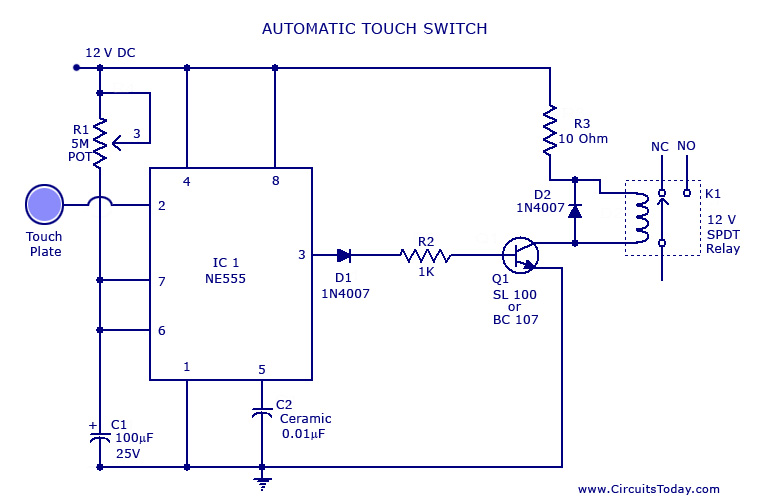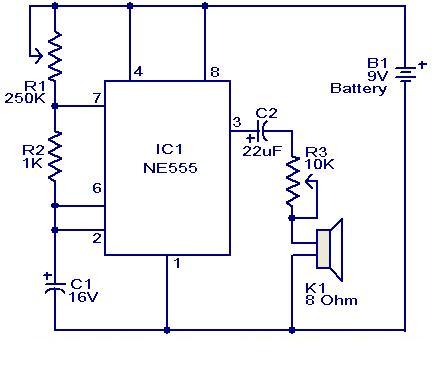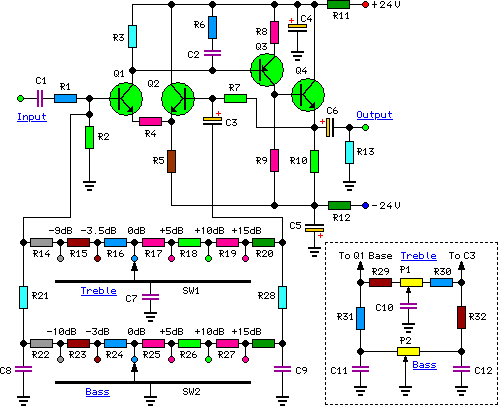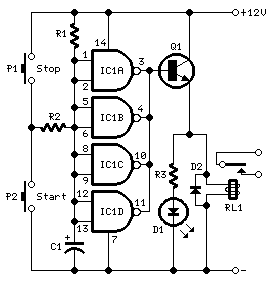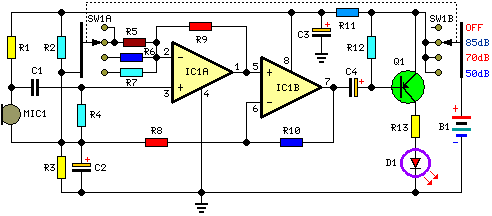
led flasher circuit schematics
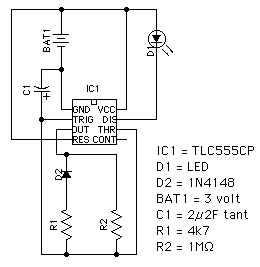
This circuit utilizes the TLC555CP timer integrated circuit to flash an LED approximately twice per second. This specific 555 timer operates on a voltage of only 3 volts, allowing it to be powered by two 1.5-volt cells. When using "AA" cells, the expected battery life can reach up to 6 months. In contrast, with larger "C" or "D" type cells, the circuit can function for several years. The application of this circuit can be integrated into road lane marker bollards or serve as a warning signal for various obstacles such as fences, scaffolding tubes, or parked vehicles. Additionally, it can be suspended from light switch pull cords to enhance visibility in dark environments.
The circuit design employs the TLC555CP timer in astable mode, allowing it to generate a continuous square wave output that drives the LED. The frequency of the flashing can be adjusted by modifying the resistor and capacitor values connected to the timer. Typically, a combination of resistors R1 and R2, along with a timing capacitor C1, will determine the on and off durations of the LED.
To implement this circuit, the power supply is connected to pins 8 (VCC) and 1 (GND) of the TLC555CP. The timing components are connected to pins 6 (threshold) and 2 (trigger), with pin 3 serving as the output pin to drive the LED. A current-limiting resistor should also be included in series with the LED to prevent excessive current flow, which could damage the LED.
For optimal performance, the choice of the timing capacitor is crucial. A larger capacitor will result in a slower flashing rate, while a smaller capacitor will increase the frequency. The circuit can be housed in a weatherproof enclosure if intended for outdoor use, ensuring longevity and reliability.
This versatile flashing LED circuit can be employed in various applications, enhancing visibility and safety in low-light conditions, making it an effective tool for road safety and obstacle marking.This circuit uses the TLC555CP timer I. C. to flash an LED roughly twice every second. This particular type of 555 timer will run off only 3 volts so two 1. 5 volt cells can be used. With "AA" cells, you can expect a battery life of up to 6 months. With larger "C" or "D" type cells it will last for years. The circuit can be incorporated into a roads ide lane marker bollard or used as a warning for other obstacles such as fences, scaffolding tubes or parked vehicles. It can also be suspended from light switch pull-cords to make them easy to find in the dark. 🔗 External reference
The circuit design employs the TLC555CP timer in astable mode, allowing it to generate a continuous square wave output that drives the LED. The frequency of the flashing can be adjusted by modifying the resistor and capacitor values connected to the timer. Typically, a combination of resistors R1 and R2, along with a timing capacitor C1, will determine the on and off durations of the LED.
To implement this circuit, the power supply is connected to pins 8 (VCC) and 1 (GND) of the TLC555CP. The timing components are connected to pins 6 (threshold) and 2 (trigger), with pin 3 serving as the output pin to drive the LED. A current-limiting resistor should also be included in series with the LED to prevent excessive current flow, which could damage the LED.
For optimal performance, the choice of the timing capacitor is crucial. A larger capacitor will result in a slower flashing rate, while a smaller capacitor will increase the frequency. The circuit can be housed in a weatherproof enclosure if intended for outdoor use, ensuring longevity and reliability.
This versatile flashing LED circuit can be employed in various applications, enhancing visibility and safety in low-light conditions, making it an effective tool for road safety and obstacle marking.This circuit uses the TLC555CP timer I. C. to flash an LED roughly twice every second. This particular type of 555 timer will run off only 3 volts so two 1. 5 volt cells can be used. With "AA" cells, you can expect a battery life of up to 6 months. With larger "C" or "D" type cells it will last for years. The circuit can be incorporated into a roads ide lane marker bollard or used as a warning for other obstacles such as fences, scaffolding tubes or parked vehicles. It can also be suspended from light switch pull-cords to make them easy to find in the dark. 🔗 External reference
